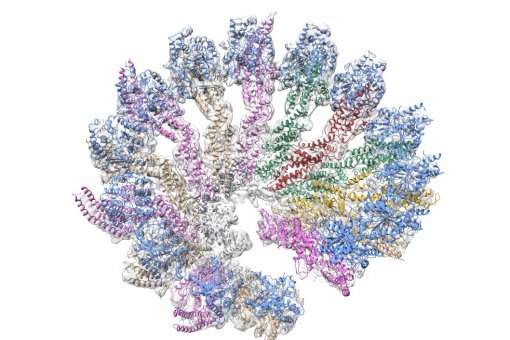Images
Contact

Researchers study the evolution of life by examining the translation of the genetic codes of several organisms, in order to discover differences between bacteria and humans that allow the design of new antibiotics
Almost all organisms, from bacteria to human beings, share the same genetic code, a group of universal instructions used to convert DNA or RNA sequences into proteins, the “building blocks” of life. Identification of the evolutionary differences between the system for the translation of the genetic code in humans and other organisms, such as bacteria in this case, are useful, for example, for the design of new antibiotics. Researchers at the Institute for Research in Biomedicine (IRB Barcelona) have discovered that an essential molecular process, namely the determination of the start of protein synthesis, until now considered to be the same for all living organisms, differs in the bacteria Mycoplasma penetrans, a human pathogen that affects the respiratory tract. M. penetrans affects immuno-depressed patients, such as those infected by the HIV virus and some cancer patients. The results of this study have been published in the latest issue of Molecular Cell.
"Thanks to these discoveries, we can observe that the genetic code and the protein translation system are not as universal as once thought and that some of the key components of the translation system appeared much later", Lluis Ribas de Pouplana
The leader of the study, Lluís Ribas de Pouplana, researcher at IRB Barcelona and head of the Gene Translation Laboratory, explains, “our work strengthens the theory that many of the components of the initial genetic code, established 3,500 million years ago, have matured separately between distinct branches of evolution: bacteria, archaea and eukaryotes”. The origin of the genetic code is one of the issues in evolution biology in which most questions remain unanswered. “The translation machinery is so complex, so universal and so essential that it is difficult to imagine how it arose and how it has evolved. Thanks to these discoveries, we can observe that the genetic code and the protein translation system are not as universal as once thought and that some of the key components of the translation system appeared much later”, concludes Ribas.
In fact, what these researchers have discovered is a difference in the mechanism used by bacteria to differentiate between methionine and isoluecine, two essential amino acids for protein formation. Specifically, methionine is the amino acid used universally to initiate protein formation.
An excessively large enzyme: a false clue for the discovery
As commonly occurs in science, the discovery of this new mechanism was by chance. The researchers were studying an enzyme called methionine-tRNA-synthetase (MetRS), which is found in all living organisms, but in the Mycoplasma bacteria it has an extension that makes it much larger. “We were studying this enzyme in order to elucidate the function of this extension”, explains Ribas. The function of MetRS in all organisms is to take methionine and attach it to the RNA transcript of methionine in order to tell the cell when it must initiate the formation of a certain protein. This task is complicated because the RNA transcript of isoleucine is practically identical. “We then saw that the Mycoplasma enzyme distinguished between the RNA transcript of methionine and the transcript of isoleucine in a more simple and proficient manner than that observed to date in other organisms”.
The most logical deduction was that the extension on this enzyme was a crucial part of this distinct recognition system. However, when the researchers removed this extension in the laboratory, the choice between the two RNA transcipt continued to operate flawlessly. “We still do now know the function of this extension of the enzyme in Mycoplasma, but in the meantime we have discovered a new mechanism of control in the translation system, which in addition, we have observed is shared by other bacteria”. This discovery contributes to an improved understanding of the evolution of the genetic code and also demonstrates its plasticity. “In my opinion a certain degree of complexity shown by the genetic code is one of the main parameters that determines the point at which organisms begin to evolve”, explains the researcher. The fundamental differences between the metabolism of human pathogens and the human being may represent the key for the development of new therapies to treat infection.
Reference article:
An operational RNA code for faithful assignment of AUG triplets to methionine
Thomas E Jones, Cassidy L Brown, Renaud Geslain, Rebecca W Alexander, Lluís Ribas de Pouplana.
Molecular Cell, 2007 [e-pub ahead of print]
IRB Barcelona
El Instituto de Investigación Biomédica (IRB Barcelona) trabaja para conseguir una vida libre de enfermedades. Desarrolla una investigación multidisciplinar de excelencia para curar el cáncer y otras enfermedades vinculadas al envejecimiento. Establece colaboraciones con la industria farmacéutica y los principales hospitales para hacer llegar los resultados de la investigación a la sociedad, a través de la transferencia de tecnología, y realiza diferentes iniciativas de divulgación científica para mantener un diálogo abierto con la ciudadanía. El IRB Barcelona es un centro internacional que acoge alrededor de 400 científicos de más de 30 nacionalidades. Reconocido como Centro de Excelencia Severo Ochoa desde 2011, es un centro CERCA y miembro del Barcelona Institute of Science and Technology (BIST).



